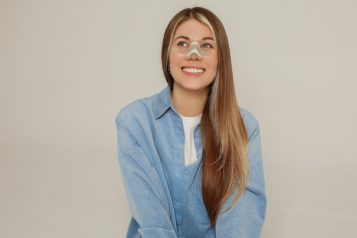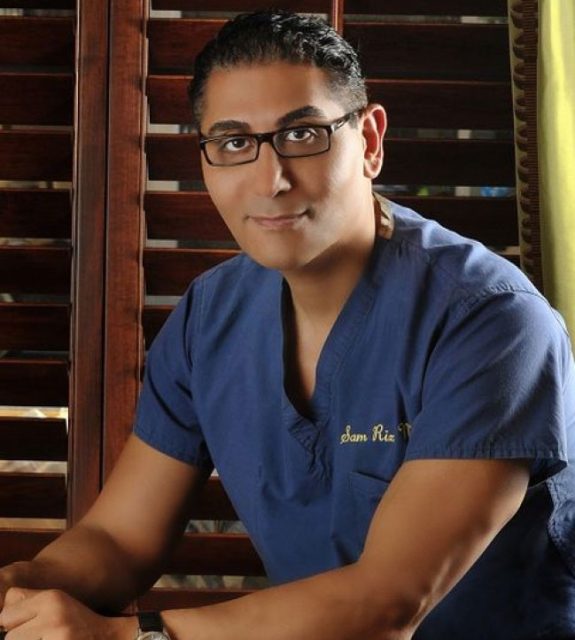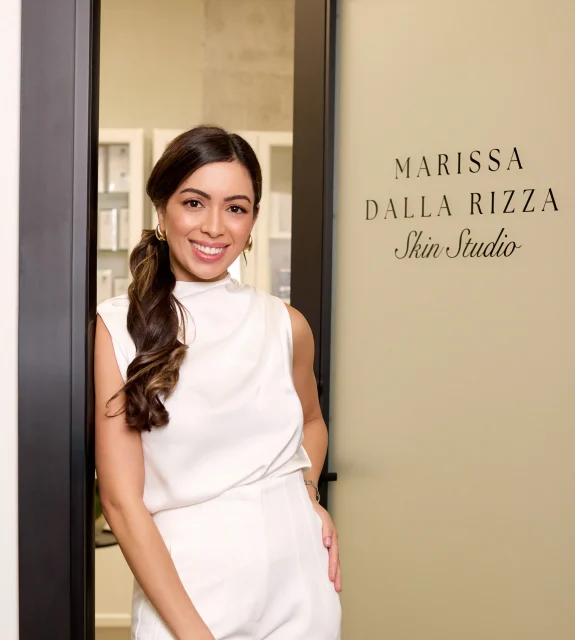Dr. Samuel Lin is a double board-certified Plastic Surgeon and Associate Professor of Surgery at Harvard Medical School who practices in Boston, Massachusetts. Dr. Lin received his Bachelor’s degree in Biomedical Engineering at Northwestern University and was enrolled in the Honors Program for Medical Education at Northwestern University, Feinberg School of Medicine, Chicago, Illinois. Dr. Lin is board certified by both the American Board of Plastic Surgery and the American Board of Otolaryngology-Head and Neck Surgery. Dr. Lin is board certified by two ABMS boards. He is Program Director of the BIDMC-Harvard Plastic and Reconstructive Surgery residency, and Co-Director of the Harvard Aesthetic and Reconstructive Plastic Surgery Fellowship at BIDMC. Dr. Lin has been a Boston “Top Doc” for several years in plastic surgery.
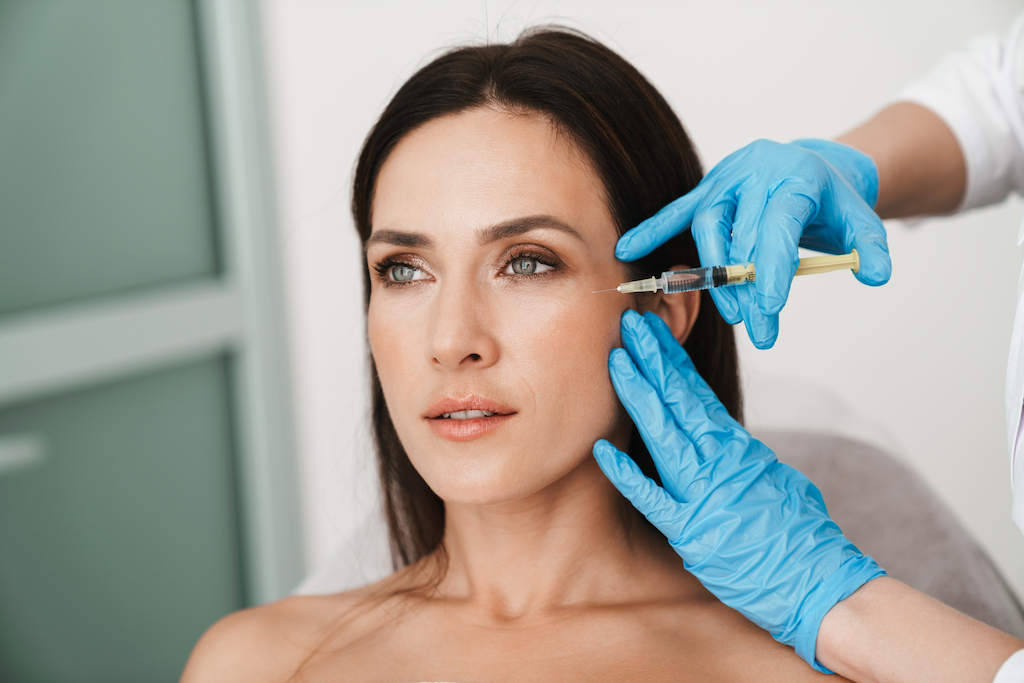 Photo Credit: Shutterstock
Photo Credit: Shutterstock
Botulinum toxin (Botox) is an injectable product that is commonly used for both cosmetic and medical applications. Botox works by blocking the release of a neurotransmitter, acetylcholine, at the interface between nerve and muscle. This results in temporary partial paralysis of the muscle1. When injected in the face for cosmetic purposes, this partial weakening of muscles improves the appearance of facial creases caused by underlying muscle activity2. Its effects have also been used to treat muscle spasms, migraines, and excessive sweating, among other conditions throughout the body. Botulinum toxin type A is the most common injectable cosmetic treatment nationwide among both men and women. Here Haute Beauty experts Alan Weidman, Lauren Valentine, and Dr. Samuel Lin, MD, FACS talks about the four most commonly used preparations on men and women of Botulinum toxin type A are Botox, Dysport, Xeomin and Myobloc2.
Where is Botox commonly injected?
The face is the most common area for which patients request Botox. The most popular site is the forehead, with the goal of minimizing wrinkles and creases associated with aging. The two next most common sites in the face are around the eyes to address “crow’s feet lines,” and between the eyebrows to improve vertical “11” creases. Other popular facial injection sites include the upper eyebrow area, around the nose, corners of the mouth and dimples of the chin2. Aside from the face, common injection sites include the back of the head, jaw muscles, armpits, and bladder for various medical conditions.
What gender-specific factors need to be considered when discussing Botox treatments?
Studies show that men may prefer Botox injections in different facial areas than women. One survey revealed that crow’s feet lines and tear troughs were the highest priority for men with 80% of respondents concerned about these areas, followed by forehead lines (74%), double chin (70%), and glabellar lines (60%)3. Due to ideal cosmetic standards which take into account differences in bone structure, hairline location and eyebrow shape, females often tend to have different areas of concern. Likewise, there are anatomical variations in skin composition amongst males versus females, which can potentially lead to differences when it comes to reactions and complications. Men typically have thicker skin with higher collagen composition compared to women. Male skin also tends to be more vascular, which carries a higher complication rate of bleeding and bruising when injecting Botox4.
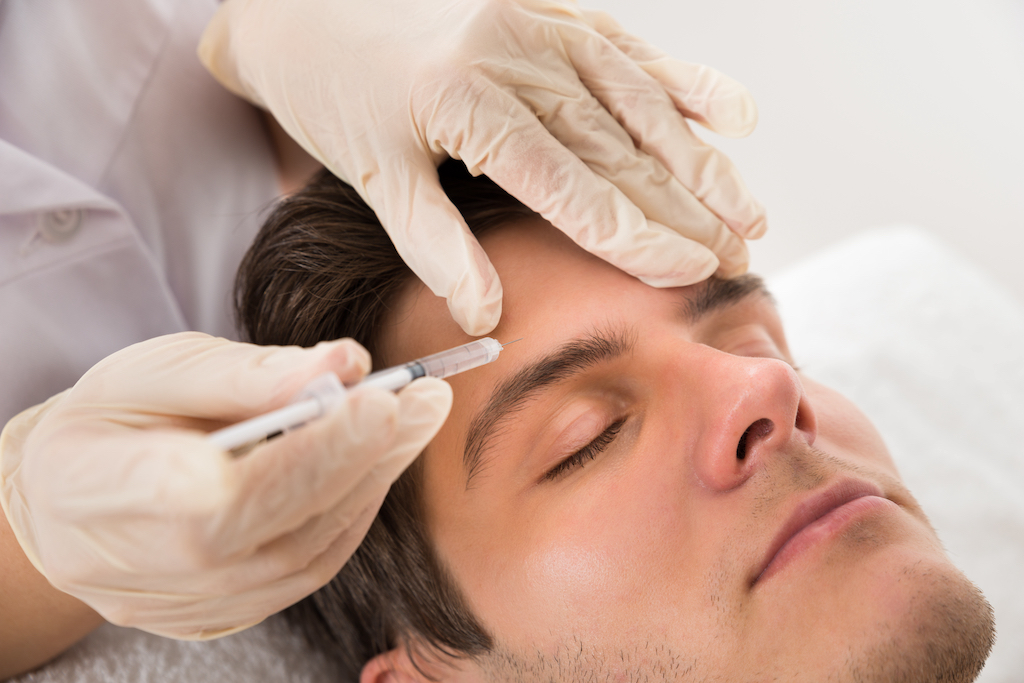 Photo Credit: Shutterstock
Photo Credit: Shutterstock
Does the amount of Botox required vary by gender?
The amount of Botox required varies by gender, with men generally requiring more units of Botox per treatment area to achieve similar cosmetic results3. Men have higher levels of androgen hormones such as testosterone, which in turn increases the amount of skeletal muscle mass in most parts of the body4. As a result, larger amounts of Botox are necessary to successfully relax the muscles treated and produce the desired cosmetic effect. Although anecdotal, some physicians believe there is potential for Botox to wear off faster in men owing to higher metabolism. However, this is likely best-addressed patient to patient and not easily generalizable to gender, given broad differences in human metabolism.
Has there been a rise in the desire for Botox?
Over the last 20 years, women have sought more Botox treatments than men. However, there has been a sharp increase in desire for Botox among both genders. From 2000 to 2020, there has been a 182% increase in the amount of Botox procedures received by men and a 497% increase for women5. Additionally, while the number of male patients requesting Botox has continued to grow, studies suggest that men have traditionally not been included in marketing efforts of plastic surgery offices that advertise Botox. Therefore, men may be less inclined to seek out Botox treatments6.
Current trends show that the prominence of Botox among both genders will likely continue to grow. Additionally, the mean age at which patients first seek out Botox injections is decreasing. This shift to younger ages is driven by a change in treatment purpose, with younger patients seeking Botox out for prevention of facial lines and creases rather than for treatment7. With women receiving 4,136,289 Botox treatments and men undergoing 265,247 procedures in 2020, Botox injections are the most common non-surgical cosmetic procedure in the US5. Therefore, it is important for patients, both men and women, as well as their providers to be aware of the changing landscape of the procedure in today's world.
Works Cited:
- Lagueny A, Burbaud P. Mécanisme d'action, indication et résultats des traitements par la toxine botulinique [Mechanism of action, clinical indication and results of treatment of botulinum toxin]. Neurophysiol Clin. 1996;26(4):216-26. French. doi: 10.1016/s0987-7053(96)85003-9. PMID: 8975111.
- Gart MS, Gutowski KA. Overview of Botulinum Toxins for Aesthetic Uses. Clin Plast Surg. 2016 Jul;43(3):459-71. doi: 10.1016/j.cps.2016.03.003. Epub 2016 May 4. PMID: 27363760.
- Jagdeo J, Keaney T, Narurkar V, Kolodziejczyk J, et al. Facial treatment preferences among aesthetically oriented men. Dermatol Surg 2016;42:1155–63.
- Flynn TC. Botox in men. Dermatol Ther. 2007;20(6):407-413. doi:10.1111/j.1529-8019.2007.00156.x
- The American Society of Plastic Surgeons. 2020 Plastic Surgery Statistics Report. https://www.plasticsurgery.org/documents/News/Statistics/2020/plastic-surgery-statistics-full-report-2020.pdf. Published 2020. Accessed July 20, 2022.
- Sammy Sinno, MD, Gretl Lam, BA, Nicholas D. Brownstone, BA, Douglas S. Steinbrech, MD, An Assessment of Gender Differences in Plastic Surgery Patient Education and Information in the United States: Are We Neglecting Our Male Patients?, Aesthetic Surgery Journal, Volume 36, Issue 1, January 2016, Pages 107–110, https://doi.org/10.1093/asj/sjv100
- Freeman M, Sayegh F, Sarosi A, et al. Millennials Are Interested in Botulinum Toxin Injections for Prevention of Facial Rhytids. FACE. 2021;2(1):94-98. doi:10.1177/2732501620984761
For more information, visit Dr. Samuel Lin's social media:






